In the battle to protect Alaska’s Bristol Bay from the horrors of a vast, open-pit mining operation which would have put the world’s largest sockeye salmon run in peril, I was, at best, one of the good soldiers who loaded the cannons.
I did the grunt work for a national non-profit, well behind the scenes, joining the fight with many others — indigenous Alaskans, commercial fishermen, recreational anglers and hunters, conservationists, guides, outfitters and just about anyone else who understood the threat posed to a fragile ecosystem by a giant, toxic reservoir of poisonous water. I did that work for the better part of two decades, all while never once venturing into the wilds of southwest Alaska to actually see the place I worked to save.
In January of this year, the U.S. Environmental Protection Agency vetoed the proposed Pebble Mine which would have been perilously located in the headwaters of Bristol Bay. After the nearly two-decade long battle against a well-funded foreign mining conglomerate for the soul of Alaska, the good guys finally won. There is to be no giant mega-mine and no massive, toxic tailings lake in the headwaters of Bristol Bay. One of the last great wild places on earth will stay that way. And the people and the fish of the region will persevere, just as they always have.
I’d never seen the rivers and the lakes that had been described to me by colleagues and fellow anglers. I’d never hooked into its giant leopard-spotted rainbows, or tangled with one of its tundra grayling or wily northern pike or any of its migrating salmon. I’d been to Alaska. Many times. But I’d never been to that Alaska.
And that Alaska is worth seeing.
The flyover
The flight to Iliamna from Anchorage marked my first glimpse of the Bristol Bay watershed, albeit from a few thousand feet up. After years of studying maps, looking at photos, watching films on the region and arguing with my political opposites about the importance of keeping this place whole, the endlessness of the expanse below compelled me to crane my neck to change the view out of the plane’s porthole window. I couldn’t see enough of it.
It’s a two-flight proposition from Anchorage to any fishing lodge in Bristol Bay. Not long after we touched down in Iliamna, we boarded a classic DeHavilland Beaver, the Cadillac of the North, for leg two. As the float plane lifted off from the slate-gray surface of Lake Iliamna and veered inland before beginning a tight circle and pointing its nose south, we were afforded a more intimate look at the birch and spruce forests, the summer-green tundra and the distant crags of Katmai National Park and Preserve. As we circled Iliamna, we flew over the emerald green Newhalen River, scarred by waterfalls and crooked as Quasimodo’s spine.

I soaked it in. Beneath me, the boreal splendor just kept delivering body blow after scenic body blow. And I thought back to the cannons I loaded. There were a lot of folks like me, spread out across the conservation and fishing worlds, each armed to the teeth with all the data any conscientious politician should need to see the Big Picture of southwest Alaska. First, there’s water. Then there’s salmon. After that, there’s everything else.
How the hell did it take so long to protect this? That was the question I kept asking myself as I gazed out the window of the Beaver.
An axis of salmon
I watched the size 10 Adams, the Molly Brown of dry flies, ride high next to a copse of overhanging grass just inches from the willow-lined bank, with acute interest. Moments before, a massive trout head pushed through the surface film of the little creek we were fishing and grabbed a hapless Green Drake mayfly floating by on that same line. I wanted to see that head again.
The fly, placed a good 10 feet upstream of the initial rise ring, proudly displayed its perfectly fluffy Antron parachute, and the steady current of this unnamed (at least as far as you know) Alaskan creek allowed the Adams to perform a drift for the ages.
Just like it’s supposed to happen, the big rainbow slid out from under the cutbank and patiently ascended to the fly. Mouth open, it surfaced just below the defenseless imitation and sucked it in. I set the hook, and my line zipped tight, securing the connection between me and the monstrous trout. This, if you ask anyone who’s ever hooked a Bristol Bay rainbow, is likely the easy part.

The fish, nearly two feet long and painted with deep, red stripes along its sides, burst from the cold, clear water of the small stream and slapped down into the foam with belly-flop enthusiasm. It took time and a little maneuvering to bring the fish in — some of the fishing lodges in the region don’t allow their guides to use nets to reduce the likelihood of injury to the fish — but I and my guide, Anthony Bacon from Royal Wolf Lodge, managed to subdue the beast and remove the now-tattered fly from its maw.
The Bristol Bay axis spins on salmon, and, mostly it spins on sockeye salmon, that red-fleshed, delectable plankton eater that migrates by the millions into the rivers, streams and lakes of Bristol Bay every summer. But for fly fishers like me, the motivation to protect the region is a bit more deep-seeded. Truth be told, while we might all say we fought to protect Bristol Bay “because of the salmon runs and their ecological and cultural significance to the region and its people,” the part we wouldn’t say out loud would be, “because there are few other places on earth where you can you find rainbow trout like these.”
Bristol Bay’s Rainbows
The rainbows of Bristol Bay survive in the network of rivers, streams and lakes, largely because everything is absolutely perfect just like it is. They spend the winters alongside lake trout, pike and Dolly Varden in the lakes and deep pools of the bigger rivers, and in spring, they venture out in search of fairly common trout food, like sculpins and aquatic insects. Usually around the first week of June, the sockeye salmon fry — the products of the previous year’s migration — start to move to the sea, and the rainbows gulp them down by the dozen. For anglers, fry patterns and streamers come out of fly boxes all over the region.
By mid- to late June the baby salmon are safe in the estuaries of the north Pacific, and Bristol Bay’s rainbows become enthusiastic dry-fly eaters — hence the big mayfly imitation on that little no-name stream. And Lord help the unfortunate mouse or vole that has to cross a swollen Bristol Bay river in early summer.

Sometime in early July, the annual migration of sockeye salmon starts to pulse into the tributaries of Bristol Bay, and this is the start of the annual bonanza for just about every living creature in southwest Alaska. From brown bears and wolves, and from rainbows and grayling to Dolly Varden and northern pike, the sockeye run marks the season of plenty.
For anglers, the game changes. It goes from that window of Valhalla, when giant trout eat gaudy dry flies and chase skated mice, to an equally productive summer of swinging Egg-sucking Leeches and bouncing egg patterns behind massive schools of bright red salmon. Finally, as the sockeyes spawn and die and start to decay, drifting salmon flesh offers up the last buffet line of the season for the leopard-spotted monarchs of the tundra’s rivers.
Yes, the sockeyes are the cornerstone fish of this amazing place. But it’s the rainbows that likely inspired recreational anglers — folks not unlike me, honestly — to dive into the Bristol Bay quagmire and punch back at the mining conglomerate who didn’t understand that the real gold mine was already there.
Pinch yourself
The fish safely unhooked, Anthony quietly let the big rainbow slide back into the stream that might have been 25 feet across. At home in eastern Idaho, I’d be thrilled with a 15-inch cutthroat in a stream this size. But here, it’s where behemoths swim.
“How do such big fish get along in such small water?”
That was my first question. And I found myself repeating it, over and over that day. The sight-casting and dry-fly fishing to rainbows well over 22 inches was video-game good. My fishing partner, Earl, and I probably pinched ourselves a dozen times each, and, just after lunch, tired and enjoying that euphoric feeling of big-fish gluttony, I handed my rod to Anthony.
“Your turn,” I said. “You can’t be here and not fish. That would be God-damned criminal.”
Hesitantly, Anthony took the rod from my trout-tired hand. It was a breach of etiquette between client and guide. At least for clients who care about that sort of thing. I’ve never been an etiquette guy.
“You sure?” he asked.
“Positive.”
He looked upstream at a particularly fishy run where, over lunch, we watched big noses rise to an appreciable hatch of Green Drakes, and just shook his head.
“Best guide day ever.”
On his first cast, Anthony nabbed a 22-inch rainbow on that waterlogged Adams.
Seriously? It took 20 years to protect this place? Unbelievable.
Popper trout
We hoped to time our visit to Bristol Bay in order to do some serious dry-fly fishing. And, while we got a couple of serious days of topwater eats on some of the smaller streams, we were reminded that Mother Nature has a sense of humor.
This past summer, the “fry run” was about two weeks late. Normally, the sockeye fry from last year’s millions-strong sockeye run into Bristol Bay’s tributaries would be migrating to the sea in late May and early June. This year, the little fish were in the system well into mid-June, which meant we had to alter our dry-fly expectations.
Knowing we were eager to try some “mousing” for big rainbows during our visit, but also knowing that the presence of millions of two-inch-long baby salmon in the system would likely turn the rainbows off of the skated mouse patterns I spent a solid week tying before flying to Alaska, guide Jeff Mulder came up with a creative solution.


First, it helps to know that the sockeye fry, as they move downstream, hold in typical “streamer water” — tailouts and runs that feature structure and a mixture of currents. The obvious choice, in terms of fly patterns, is to swing streamers through these runs.
But, both Earl and I noticed that the huge clouds of down-running fry often held close to the surface — we witnessed flocks of Arctic terns plucking the little fish from the river in calculated squadrons of dive bombing birds.
Jeff suggested we kind of hybridize our approach. With the fry running so shallow on the Nonvianuk, the “home river” for Royal Wolf Lodge, and our own selfish desire to enjoy the violent surface takes the region’s big rainbows are known for, Jeff tied an honest-to-God bass popper on my tippet.
And, no, it wasn’t fast and furious, but the visual explosions of big fish under the skated popper made the effort completely worthwhile. And both Earl and I landed a few legit “popper trout,” something I’d never done before.
No, it didn’t replace the slow-motion nirvana that takes place when a 24-inch rainbow rolls over on a mouse pattern, but it was a close second. And, as Jeff said, it helps anglers like us enjoy surface action even when the rivers’ big rainbows are dialed into the fry headed to the ocean.
This place
It may sound a bit redundant, but the sensory overload of the region, veined by rivers like the Brooks, the Nonvianuk, the Kuklaklek and the Alagnak, gets in your head. And, from our home base at Royal Wolf Lodge, there are lesser-known fly-out trips to smaller waters, like Moraine, Battle and American creeks. On our first day, Earl caught a 26-inch behemoth in the lower reaches of American Creek, a relatively small stream that sports some great walk-and-wade fishing. The giant trout came to hand as he let a streamer swing under a log jam — he saw the whole thing unfold—the visual appeal of casting to Bristol Bay Rainbows isn’t just reserved for dry-fly angling.
Some other streams available to anglers shall remain nameless, for obvious reasons.

For fly fishers, Bristol Bay is largely about the trophy trout fishing. But that’s not it, entirely.
On our last evening at the lodge, Earl and I sat out on the lodge’s quintessential Alaskan deck as it overlooks Little Lake. We’d poured some solid Irish whiskey over a few ice cubes and were determined to make it to midnight in the Land of the Midnight Sun, where the sun doesn’t really set on the horizon — it’s more of a Pete Mitchell fly-by along the edges of the tundra, or, as summer progresses, it touches its wheels to the runway before lifting off again and circling the Arctic one more time.
As we gazed across the lake, a solitary brown bear — a big male with a sizable hump and a fairly laissez-faire countenance — emerged from the black spruce woods and wandered down to the lake. With everything quiet and still, I’ll never forget watching the big bruin as it appeared to stand on the muskeg banks of the lake and stare into the glassy water, as if checking out his own reflection.

After a half-dozen fly outs over the course of the week, both Earl and I were fortunate enough to sample perhaps the best fly fishing in the world for giant rainbow trout, and we got to see much of the vast landscape and many of the rivers these fish call home. We tipped our glasses toward one another, understanding that it may be a while before we’ll get back to this place, and that we’d need to let the memories marinate for a while.
If you go
Getting there
Anglers visiting Bristol Bay will first fly into Anchorage, and either overnight in Alaska’s biggest city, or take cab or a ride service to Lake and Peninsula Airlines across town for an afternoon flight to Iliamna or King Salmon, depending on which outfitter they’ve chosen. Once in one of these remote communities, the lodge they’ve chosen will appoint a pilot who will meet guests and fly them to their respective lodges.
Choosing an oufitter
There are several outfitters who offer fly-out fly fishing for visiting anglers. Many anglers will find Royal Wolf Lodge to be an excellent choice, both for the quality of the lodge, the excellent service and, of course, the unmatched access and daily fly outs to some of Bristol Bay’s most heralded and iconic waters. Granted, other factors come into play for some traveling anglers — factors like lodging, connectivity and meals are important. The lodge is immaculate, the cabins are beyond comfortable, and you can enjoy pike sliders conjured up by chef Ryan Milton while you catch up on your emails in the main lodge.
When to go
Most Bristol Bay lodges open in early June, and streamer fishing early in the season can be quite good — the sockeye fry migration to the sea starts just after most lodges open. As things warm up by mid-June into early July, dry-fly fishing and mousing becomes the preferred method for most anglers. By mid-July, the fabled run of Bristol Bay sockeye is pushing its way up the area rivers and, from then through October, the region’s trophy rainbows, Dolly Varden, lake trout and grayling are tuned in to salmon eggs and, later in the season, salmon flesh as it decays and drifts downstream. All of that said, there is no bad time to go. Rather, anglers should simply time their visit with the angling style they prefer most.





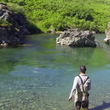
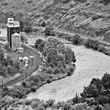
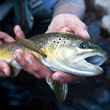
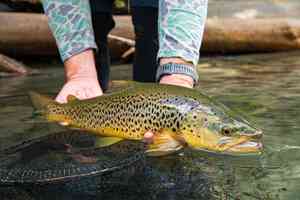


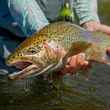



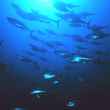
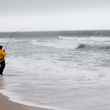



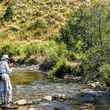




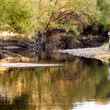
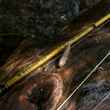
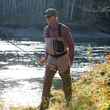
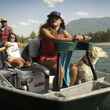
Comments